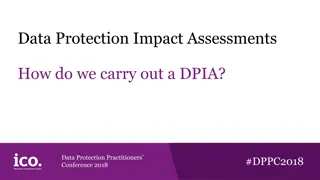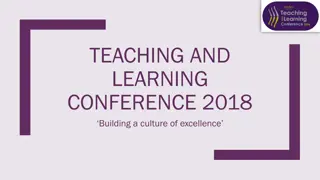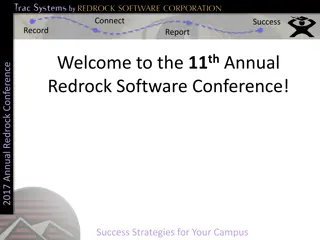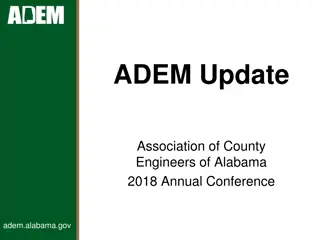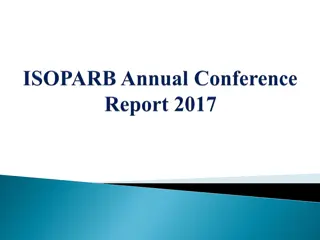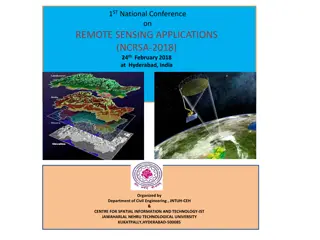
Research Methodologies: Qualitative vs Quantitative Analysis
Explore the differences between qualitative and quantitative research methodologies to gain insights into data collection methods, analysis techniques, and the purposes they serve. Understand how to decide on a methodology, the guiding principles in research, and the benefits of each approach. Discover the nuances of exploratory research, data collection methods, and statistical analysis in both qualitative and quantitative studies.
Download Presentation

Please find below an Image/Link to download the presentation.
The content on the website is provided AS IS for your information and personal use only. It may not be sold, licensed, or shared on other websites without obtaining consent from the author. If you encounter any issues during the download, it is possible that the publisher has removed the file from their server.
You are allowed to download the files provided on this website for personal or commercial use, subject to the condition that they are used lawfully. All files are the property of their respective owners.
The content on the website is provided AS IS for your information and personal use only. It may not be sold, licensed, or shared on other websites without obtaining consent from the author.
E N D
Presentation Transcript
Presenters Presenters: Nguyen Truong Sa, PhD Tran Kieu My An, PhD Phan Thi Tuyet Nga, PhD
The philosophy/ the principle which guide your research Research methodology vs. research method
Quantitative Qualitative
is primarily exploratory research. used to gain an understanding of underlying reasons, opinions, and motivations. provides insights into the problem or helps to develop ideas or hypotheses for potential quantitative research. is used to uncover trends in thought and opinions, and dive deeper into the problem.
Qualitative data collection methods vary: - unstructured or semi-structured techniques. Some common methods include: focus groups (group discussions) individual interviews participation/observations. The respondents are selected to fulfill a given quota. sample size is typically small, and
used to quantify the problem by way of generating numerical data or data that can be transformed into useable statistics. used behaviors, and other defined variables and generalize population. uses measurable data to formulate facts and uncover patterns in research. to quantify attitudes, opinions, results from a larger sample
Quantitative data collection methods are much more structured than Qualitative data collection methods. Quantitative data collection methods include various forms of surveys: online surveys paper surveys mobile surveys kiosk survey face-to-face interviews telephone interviews longitudinal studies website interceptors online polls and systematic observations.
Qualitative Qualitative research research Quantitative Quantitative research research -Attitudes, and experiences -Method: unstructured interviews, group -Purpose: to get in- depth participants => fewer people take part behaviour Statistics -method: close ended questionaires, structured interview focus -Purpose: => more people numbers opinion from
First look at your research statement. how many , test , verify , how often , how satisfied quantitative research discover , motivation , experiences , thought/ think , problems , behaviour/behave qualitative research
It could be a combination of both qualitative and quantitative research
This research aims to find out what primary school teachers think about the educational value of Disney channel . => Qualitative 2. The aim of this research is to find out how many students who are not majored in English use computer soft ware to practice English. => Quantitative 3. My project is to find out if teenagers are interested in summer course in their school and how many teenagers will attend the summer course this year. => Combination of both 1.
Tools to collect your data In this chapter: Interviewing Focus group Questionnaires Participant observation
Unstructured Semi-structured Structured
No pre-plan set of questions The interviewer has a topic area in mind and talk to the interviewee in a conversational way. The participants are free to talk about what s/he thinks important little influence from the researcher qualitative research Form: open-ended questions
Difficulty: - the interviewer should have good connections to the interviewee to trust - the interviewer should have good communication skills. - difficult to analyze data
The most common interview used in Qualitative social research the researcher wants to know specific information which can be compared and contrasted with information gained in other interviews the same questions need to be asked in each interview Provide much more detailed information
The interviewer asks you a series of questions and ticks boxes with your response verbal questionaires Structured interviews are used in quantitative research and can be conducted face-to-face or over the telephone, sometimes with the aid of lap-top computers. We will discuss with more details in the part of the questionnaire
A number of people are asked to come together in a group to discuss a certain issue. led by a moderator or facilitator who: - introduces the topic - asks specific questions - controls digressions - stops break-away conversations.
Example: Discussion school Discussion about the new law of being fined for going pass the yellow light in traffic about adults experiences of
Warm up and introduction - introduction of moderation - ice-breaker for participants - outline of the process Main topic discussion - moderate group discussion that focus on the specific questions Wrap-up - final thoughts and reflections
A popular way of collecting data. But all too often the researcher rushes the design of the questions and end up not getting the kind of data required. 3 types: Opened- ended questionnaire Closed ended questionnaire Combination of opened-ended and close-ended questionaire
4.1 Closed-ended questionnaires follow a set format can be scanned straight into a computer for ease of analysis is used to generate statistics in quantitative research. the most familiar type. Ex: Are you feeling better today? May I use the bathroom?
4.2 Open-ended questionnaires are used in qualitative research, although some researchers will quantify the answers during the analysis stage. does not contain boxes to tick, but instead leaves a blank section for the respondent to write in an answer. Whereas closed-ended questionnaires might be used to find out how many people use a service, open- ended questionnaires might be used to find out what people think about a service. Ex: What was your high school experience like? How did you and your best friend meet?
4.3 Combination of both Many researchers tend to use a combination of both open and closed questions. By that way, it is possible to find out how many people use a service on the same form. Many questionnaires begin with a series of closed questions, with boxes to tick or scales to rank, and then finish with a section of open-questions for more detailed response.
Close Close- -ended questions ended questions Open Open- -ended questions ended questions Do you know who your target customer is? Who is your target customer? Are you open on the weekends? What are your store hours? Are you planning to launch the new soft ware in the second quarter? When are you planning to launch the new software Is you warehouse in the area? Where is your warehouse located? Are you considering a change? Why are you considering a change
There are two main ways in which researchers observe direct observation participant observation
1. Direct observation: Direct observation used in areas such as health and psychology It involves the observation of a subject in a certain situation and often uses technology such as video cameras or one-way mirrors.
2. Participant observation: The researchers become much more involved in the lives of the people being observed researchers observers; participating in their activities without anyone knowing that they were conducting research became entering covert organizations participant and
Research Unstructured Research method method Semi structured Structured Interview Focus group Open-ended Close-ended Combination Direct observation Participant observation Questionnaire Participant observation
Think methodology. This will help you to decide upon the most appropriate methods for your research. It is not necessary to use only one research method. A combination of methods can be desirable as it enables you to overcome the different weaknesses inherent in all methods. seriously about your research
Thank you for your attention! Thank you for your attention!






